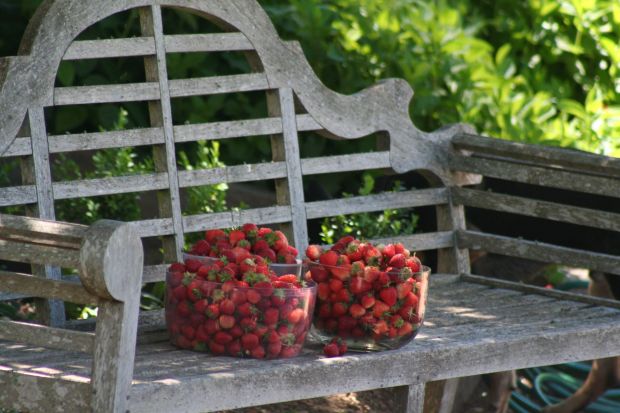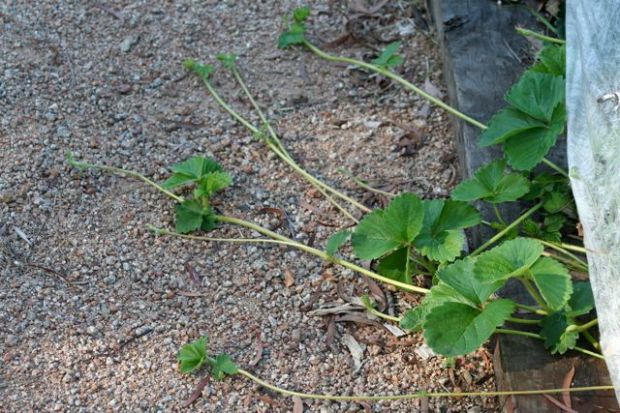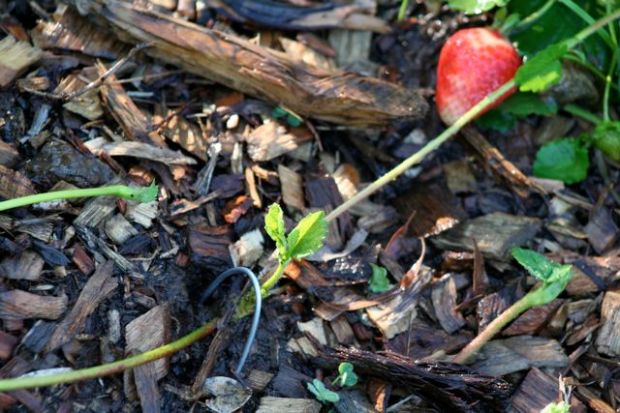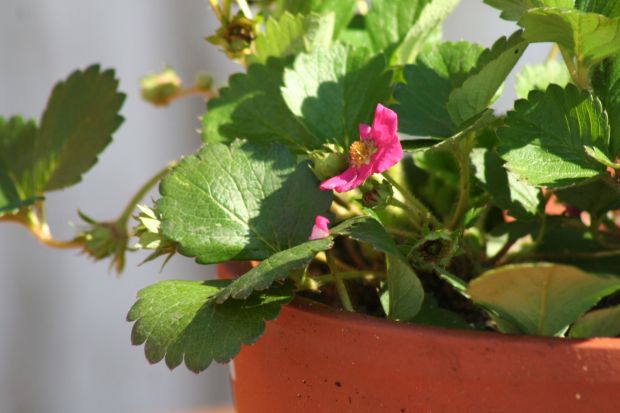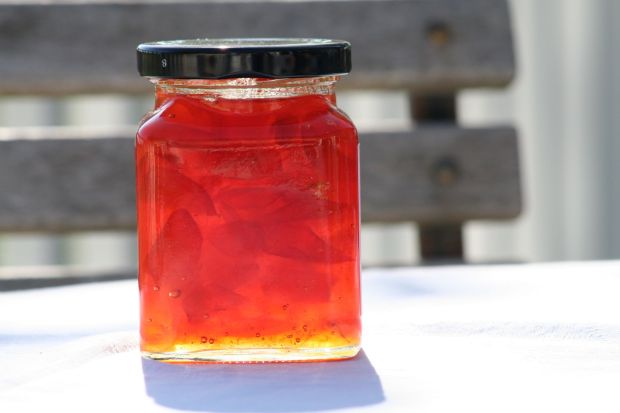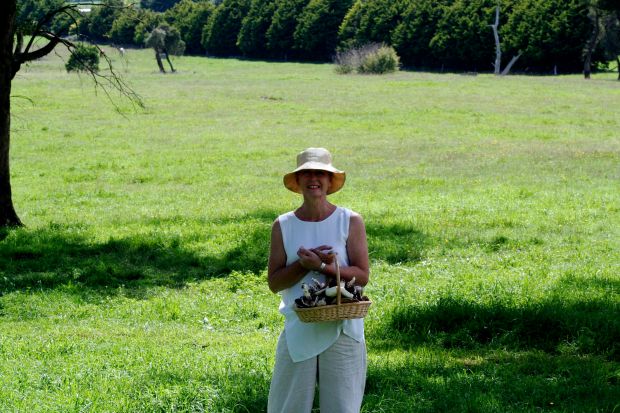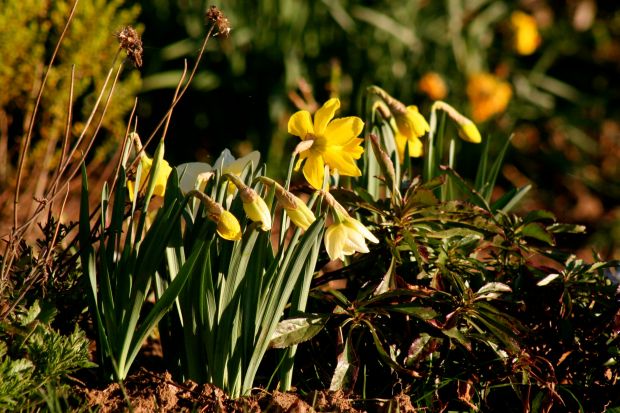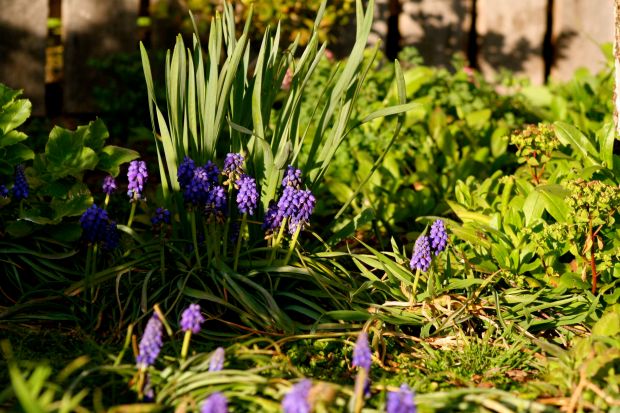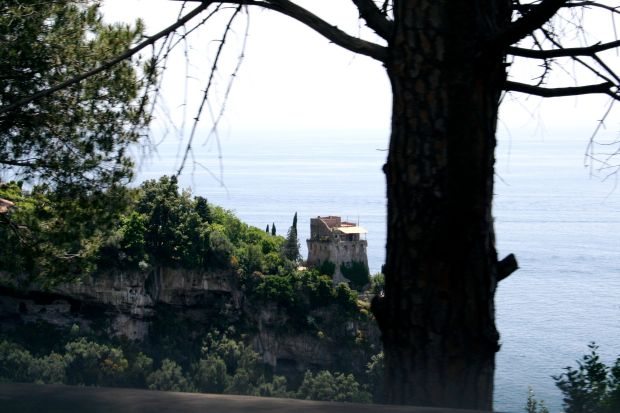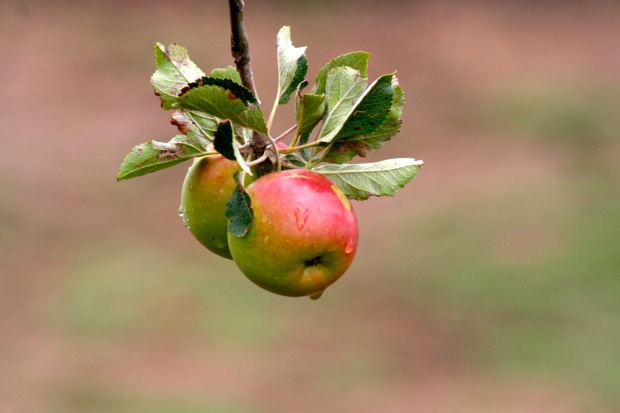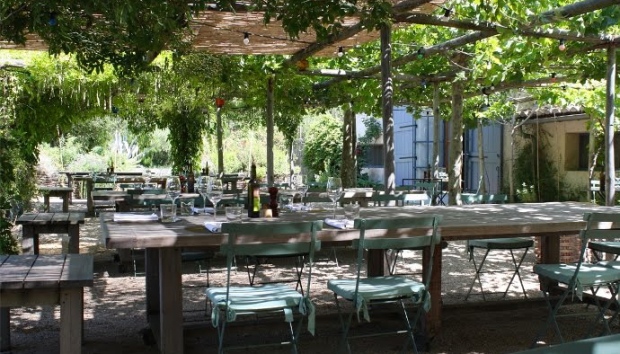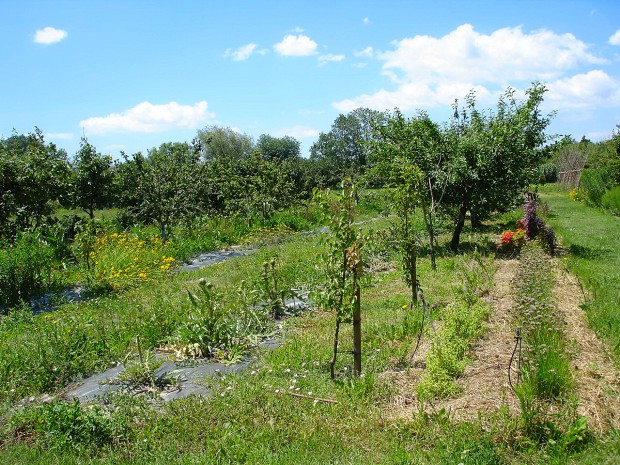 Yesterday morning, the sun came out and sparkled on the soaked landscape. So I took our little dog Harry and sheepdog Sam on the quad bike for a big run around the pinoak paddock. (Jack doesn’t come, he’s scared of the bike!) And on the way, we passed the Medlar tree. Now in its fourth year it is laden with fruit and in the watery light of the morning sun it looked incredibly beautiful. The medlars are like golden toffee apples and are set off by the Manchurian Pear as it changes colour, and you can just see in the background (pics below) our neighbours pinoaks turning colour in the same amber tones. Very soon their Pinot Noir vines will also turn to match and the russet tones gather together in an almost perfect autumn painting. People ask me what we do with the medlars. And the answer at this stage is nothing. I just pick them and admire them in a bowl. In times of old they were valued as a fruit that was available in winter, but you can’t eat them off the tree. You have to wait till they spoil, either by frost or becoming ‘bletted’ (basically rotten) in storage, then they are considered a delicacy and can be served as a dessert, or as an accompaniment to cheese and port. An acquired taste, I believe. I’ve never tried them but a friend makes them into Medlar Jelly which I’m told is delicious. So why grow fruit that you can’t eat? Because I saw a lovely specimen years ago in the garden of the late Christopher Lloyd, at Great Dixter and it was so beautiful I had to have one. It has massive blossoms in the spring – almost like magnolia flowers, then this golden fruit in autumn. When it is bigger I’m imagining great branches of it in a massive floral arrangement and will pass some on to the very talented Margaret Young Whitford to turn into some incredible installation. Which is what she does so brilliantly. And that’s another story for another day.
Yesterday morning, the sun came out and sparkled on the soaked landscape. So I took our little dog Harry and sheepdog Sam on the quad bike for a big run around the pinoak paddock. (Jack doesn’t come, he’s scared of the bike!) And on the way, we passed the Medlar tree. Now in its fourth year it is laden with fruit and in the watery light of the morning sun it looked incredibly beautiful. The medlars are like golden toffee apples and are set off by the Manchurian Pear as it changes colour, and you can just see in the background (pics below) our neighbours pinoaks turning colour in the same amber tones. Very soon their Pinot Noir vines will also turn to match and the russet tones gather together in an almost perfect autumn painting. People ask me what we do with the medlars. And the answer at this stage is nothing. I just pick them and admire them in a bowl. In times of old they were valued as a fruit that was available in winter, but you can’t eat them off the tree. You have to wait till they spoil, either by frost or becoming ‘bletted’ (basically rotten) in storage, then they are considered a delicacy and can be served as a dessert, or as an accompaniment to cheese and port. An acquired taste, I believe. I’ve never tried them but a friend makes them into Medlar Jelly which I’m told is delicious. So why grow fruit that you can’t eat? Because I saw a lovely specimen years ago in the garden of the late Christopher Lloyd, at Great Dixter and it was so beautiful I had to have one. It has massive blossoms in the spring – almost like magnolia flowers, then this golden fruit in autumn. When it is bigger I’m imagining great branches of it in a massive floral arrangement and will pass some on to the very talented Margaret Young Whitford to turn into some incredible installation. Which is what she does so brilliantly. And that’s another story for another day. 





 Medlar notes (thank you Wikipedia):
Medlar notes (thank you Wikipedia):
Mespilus germanica, known as the medlar or common medlar, is a large shrub or small tree, and the name of the fruit of this tree. The fruit has been cultivated since Roman times, and is unusual in being available in winter, and in being eaten when ‘bletted’ (browned by rot). It is eaten raw and in a range of dishes.
Despite its Latin name, which means German or Germanic medlar, it is indigenous to southwest Asia and also southeastern Europe, especially the Black Sea coasts of Bulgaria and of modern Turkey. The medlar was already being cultivated about three thousand years ago in the Caspian Sea region of northern Iran and Azerbaijan. It was introduced to Greece around 700 BC, and to Rome about 200 BC. It was an important fruit plant during Roman and medieval times. By the 17th and 18th century, however, it had been superseded by other fruits, and is little cultivated today. M. germanica pomes are one of the few fruits that become edible in winter, making it an important tree for gardeners who wish to have fruit available all year round. Mespilus germanica fruits are hard, acidic, and high in bitter tannins. They become edible after being softened, ‘bletted’, by frost, or naturally in storage given sufficient time. Once softening begins the skin rapidly takes a wrinkled texture and turns dark brown, and the inside reduces to the consistency and flavour reminiscent of apple sauce. This process can confuse those new to medlars, as a softened fruit looks as if it has spoiled.
Once bletted, the fruit can be eaten raw, and are often eaten as a dessert, for example with cheese or tarts, or used to make medlar jelly and wine. Another dish is “medlar cheese”, which is similar to lemon curd, being made with the fruit pulp, eggs, and butter. In Iran, the fruits, leaves, bark and wood of the tree have been used as medicines for ailments including diarrhoea, bloating of the stomach, throat abscesses and fever.
Mespilus germanica requires warm summers and mild winters and prefers sunny, dry locations and slightly acidic soil. Under ideal circumstances, the deciduous plant grows up to 8 metres (26 ft) tall. Generally, it is shorter and more shrub-like than tree-like. With a lifespan of 30–50 years, the medlar tree is rather short-lived. The leaves are densely hairy and turn red in autumn before falling. It is found across Southern Europe where it is generally rare. It is reported to be naturalized in some woods in Southeast England, but is found in few gardens.
The flowers have five broadly ovate white petals and appear in late spring. They are hermaphrodite, pollinated by bees, and self-fertile. The flower is about 6 centimetres wide and the reddish-brown fruit is a pome, 2–3 centimetres diameter, with wide-spreading persistent sepals around a central pit, giving a ‘hollow’ appearance to the fruit.
